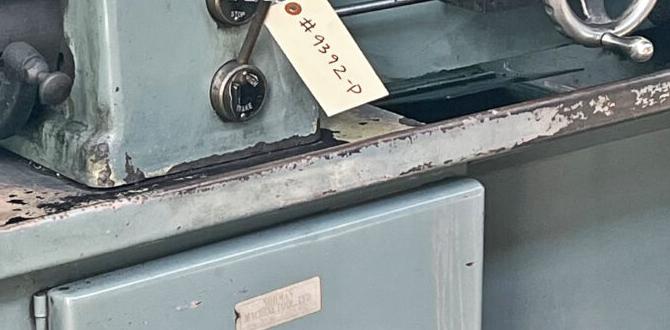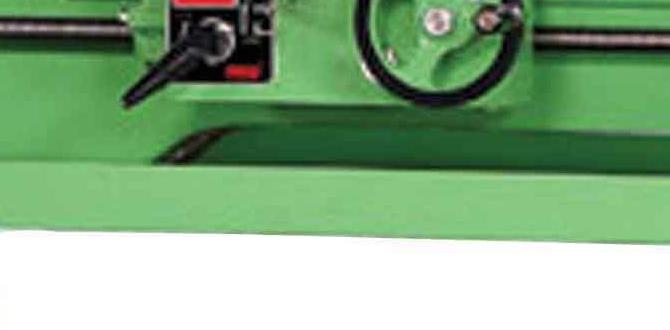Seamlessly Replicate Designs with Your Own Wood Lathe Duplicator Homemade Project
For woodturners seeking to achieve perfect symmetry and replicate intricate designs with ease, a wood lathe duplicator homemade project offers an incredibly satisfying and rewarding endeavor. Imagine turning a batch of identical decorative finials for a staircase, or producing a series of matching turned legs for furniture – tasks that can be tedious and prone to minor variations when done freehand. A well-constructed duplicator empowers you to transfer your master piece onto subsequent blanks with remarkable accuracy, significantly boosting efficiency and ensuring consistent results across multiple projects. This isn’t just about making things easier; it’s about unlocking new levels of precision and professional polish in your woodworking.
The concept behind a lathe duplicator is elegantly simple. Essentially, it’s a mechanism that guides a cutting tool along a path dictated by a master template. As you feed the wood through the lathe, the template, often a precisely shaped piece of wood or metal, interacts with a follower arm. This follower arm, connected to the tool rest or a separate sliding carriage, translates the shape of the template directly to the cutting tool. The result? Your workpiece takes on the exact contours of your master. Building one yourself requires a blend of woodworking skills, a bit of mechanical understanding, and a willingness to tinker, but the payoff in enhanced turning capabilities is substantial.
Designing Your Wood Lathe Duplicator: Key Considerations
Before diving into construction, it’s crucial to outline your design. A fundamental aspect of any wood lathe duplicator homemade project is the template system. Will you use a flat, profile-style template that runs parallel to the lathe bed, or a cylindrical template that spins with the workpiece?
Profile Templates: These are generally simpler to fabricate and mount. A flat piece of material, typically plywood, MDF, or even metal, is cut to the exact shape you want to replicate. A roller or stylus attached to the tool rest assembly follows this profile. The advantage here is the ease of creating and modifying templates – simply trace and cut a new profile. This is ideal for turning shapes that don’t require full 360-degree rotational symmetry, or where you are replicating a profile along the length of a spindle.
Cylindrical Templates: For turning identical round elements, like table legs or candlestick bases, a cylindrical template offers superior accuracy. The template is essentially a “ring” or a precise turning representing your desired shape. A follower mechanism then traces this cylindrical guide as the workpiece rotates. This method excels at ensuring perfect circularity and consistent profiles around the entire circumference of your turned pieces.
Another critical design element is the tool carriage and follower mechanism. This is where the template’s shape gets transferred to the cutting tool. Common approaches involve a sliding carriage that moves along the lathe bed, or a system integrated with the existing tool rest. The follower itself can be a simple ball bearing, a hardened steel roller, or even a specialized cutting stylus. The key is to ensure smooth, zero-play movement to accurately capture the template’s details. Many successful homemade duplicators utilize a system that allows the cutting tool to be mounted directly to the follower arm, ensuring movement in perfect unison.
Building Your Wood Lathe Duplicator: Materials and Assembly
The materials you choose will depend on your budget and the desired durability of your duplicator. For a basic profile duplicator, high-quality plywood or MDF can serve well for the template and structural components. Metal, such as aluminum or steel, is a more robust option for the tool carriage, guide rails, and follower components, offering greater rigidity and longevity.
When assembling your wood lathe duplicator homemade project, precision is paramount. Ensure all mating surfaces are square and true. If you’re using metal components, consider investing in some basic machining skills or seeking help from a local machinist for critical parts like the tool post mounting or follower assembly.
Guide rails are another essential component. These need to be straight and exceptionally smooth to allow unimpeded movement of the carriage. Often, repurposed drawer slides, linear bearings, or even precisely machined metal rods can be employed. The connection between the follower and the cutting tool should be rigid but allow for the tool to be adjusted for depth of cut. Many designs incorporate a simple bracket that holds a standard lathe tool, allowing you to use your existing chisels.
Utilizing Your Homemade Wood Lathe Duplicator
Once your duplicator is built and calibrated, the real magic begins. Select your master piece and carefully reproduce its template. For profile templates, this might involve tracing the master onto your chosen material and then cutting it out with a scroll saw or bandsaw, followed by meticulous sanding to achieve a smooth, accurate guide. For cylindrical templates, you’ll turn a blank to the exact dimensions of your desired replicated shape.
Mount the template securely to your lathe’s bed or headstock assembly, depending on your design. Then, mount your workpiece blank. Position the follower arm so it’s in firm contact with the template. Carefully engage the follower mechanism with your cutting tool, ensuring they move as one.
Start your lathe at a slow speed. Begin by making light passes with your cutting tool, allowing the follower to guide you along the template’s contours. As you gain confidence and the shape begins to emerge, you can gradually increase the depth of your cuts. Always maintain contact between the follower and the template. Don’t force the tool; let the mechanism do the work. The beauty of this wood lathe duplicator homemade project is that with each pass, your workpiece will more closely conform to the master template.
The Endless Possibilities
A homemade wood lathe duplicator is more than just a tool; it’s a gateway to enhanced creativity and efficiency. It allows you to tackle complex, multi-part projects with a newfound confidence. Whether you’re a hobbyist looking to produce identical decorative elements or a professional seeking to streamline your production, building your own duplicator is a deeply satisfying and immensely practical undertaking. The satisfaction of turning perfectly matched components, knowing you built the very machine that enabled such precision, is an unparalleled reward for any woodturner.



